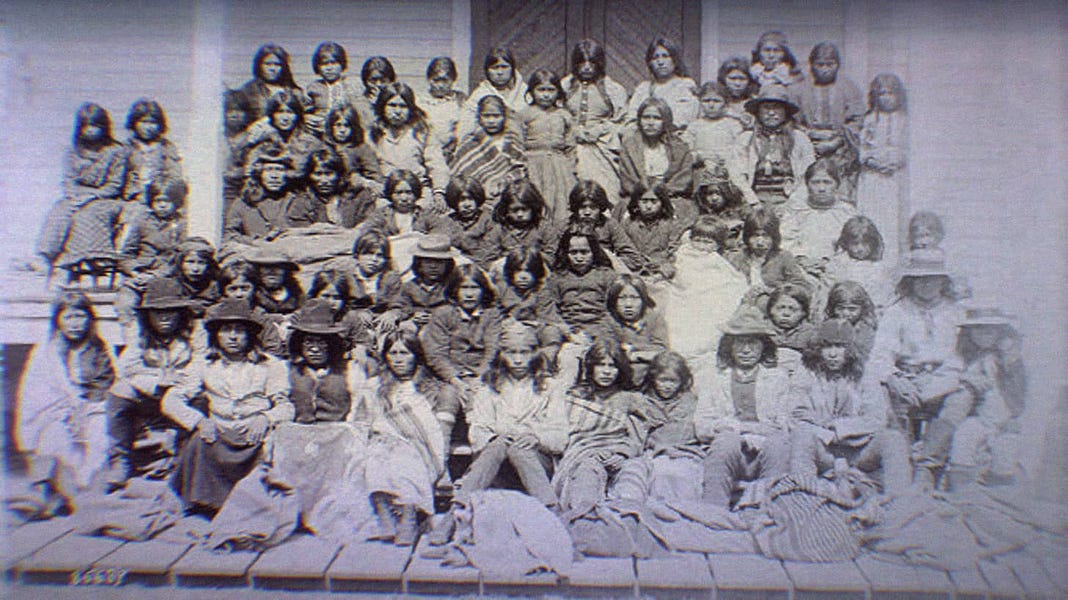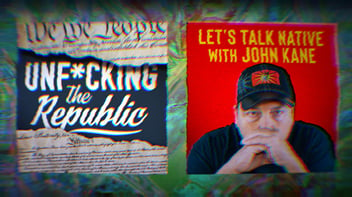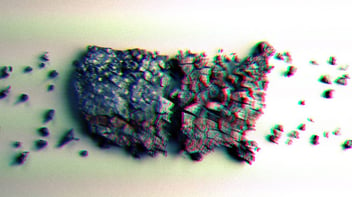Boarding Schools from Hell: Indian Residential Schools in America
 Image Description: Ciricahua Apaches at the Carlisle Indian School. Children and adults sit on the porch of the school.
Image Description: Ciricahua Apaches at the Carlisle Indian School. Children and adults sit on the porch of the school.
In 1886, U.S. Indian Agent Fletcher J. Cowart described the difficulty in forcibly removing Apache children from their parents in an effort to send them to federal boarding schools.
“When called upon for children, the chiefs, almost without exception, declared there were none suitable for school in their camps. Everything in the way of persuasion and argument having failed, it became necessary to visit the camps unexpectedly with a detachment of Indian police, and seize such children as were proper and take them away to school, willing or unwilling. Some hurried their children off to the mountains or hid them away in camp, and the Indian police had to chase and capture them like so many wild rabbits.”
‘Like so many wild rabbits’.
‘Like so many wild rabbits.’
This excerpt is from the recently released report from the Department of the Interior under Secretary Deb Haaland. The report is part of a coordinated effort to raise awareness of the Indian Residential School system that was in place in the United States from 1819 to 1969. That’s 150 years.
We covered the movement in Canada, called the Truth and Reconciliation Act, established to come to terms with the genocidal past of the Canadian government in its treatment toward its First Nations people. In Canada, this is a serious effort. The discovery of mass graves sent shockwaves through Canada and brought the nation face to face with its horrific history.
Moreover, the news generated an appropriate amount of horror among Canadians, many of whom were unaware of the practice of stripping children from their parents, oftentimes never to be heard from again. Here in the United States, it generated, well, not much of anything. Sure, there were a handful of news stories in major outlets, and there has been open speculation for years that the U.S. practice of kidnapping native children was likely far worse in sheer numbers than in Canada. But the confirmation of children’s bodies found in marked and unmarked graves barely held the news cycle for an evening.
And yet, even though this devastating report is only days old as of this writing, it has all but disappeared from the headlines. So, I won’t be quoting from any of them. Only native media sources for this piece.
In terms of scope, Secretary Deb Haaland said the investigation revealed 408 schools throughout the United States, Alaska and Hawaii. All designed to strip native children of their heritage, their traditions, language and—in far too many cases—their lives.
As the Lakota Times reports, the organized process began in earnest in 1819 with the passage of the Civilization Fund Act:
“The Act encouraged activities of benevolent societies in providing education for Native Americans and authorized an annuity to stimulate the “civilization process.” The Civilization Fund Act led to the formation of numerous Native American boarding schools towards the end of the 19th century. The benevolent societies were a combination of Christian missions where U.S. Federal funds were allocated to schools designed to educate Native Americans in the ways of the white man.”
The Lakota Times piece goes on to detail the legislative activities that gave authority to agencies of the U.S. government to control and forcibly assimilate native populations. The Bureau of Indian Affairs, for example, was created in 1824 within the War Department to place native peoples in “positions where they can be controlled, and finally compelled by stern necessity.” This broad authority included deputizing so-called “Indian police” to raid native territories and take children away from parents.
In 1920, the Indian Act made it “mandatory for every Indigenous child to attend a residential school and illegal for them to attend any other educational institution.”
The early part of the 20th Century was an all out assault on native peoples. Whites were stealing land, what reports today call “dispossession,” and removing children at a horrifying rate. At their peak, these residential schools housed tens of thousands of children, many of whom had little or no memory of where they came from.
Upon entering, their heads were shaved.
They were given uniforms to remove any physical vestiges of culture.
They were punished if they spoke their native tongue.
Beaten if they tried to escape.
Most were placed into forced labor.
Many died and were buried at the schools.
Sometimes in marked graves. Sometimes not.
I’m going to move through a highlight of the report, but it’s linked here. I encourage you to read it if you get a chance. Of course, if you live in a state that discourages the teaching of racial history because it’s too sensitive for little white eyes and ears, I’ll understand if you don’t.
The report opens with a summary of the findings from the Interior commission and identifies the 408 schools in question. It does, however, reveal that there are an unknown number of unaffiliated (sort of ‘off the books’) centers that took in children as well. The report gives the names of the schools, but refrains from offering specific locations of known grave sites out of respect for families and out of concern that these areas might be vandalized. That, in and of itself, is a shame. But it does specifically point to 53 burial sites, as of the report release, with “more discoveries and data expected as we continue our research.”
According to the research as of now, “The greatest concentration of schools in the Federal Indian boarding school system was in present-day Oklahoma, with 76 Federal Indian boarding schools; Arizona, with 47 schools; and New Mexico, with 43 schools.”
In terms of the forced labor the children were subjected to, the report found that labor included raising livestock, dairying, fertilizing, lumbering, brick-making and railroad construction.
A review of just 19 of the 408 schools revealed that there were more than 500 deaths attributed to these schools. Over 500 American Indian, Alaska Native and Native Hawaiian children died at just these 19 schools. So, if this ratio holds true for the balance of their investigation, that’s more than 10,000 children who presumably died while in the care of the mostly Christian missionary schools funded by the U.S. government.
Contrast this to what the U.S. discovered when it annexed Alaska in a deal with the Russians:
“When the U.S. government took over the Alaskan territory from Russia, it was surprised at the level of education provided to the native Alaskan children. As the United States later acknowledged following the acquisition of Alaska, ‘nearly all of them read and write…Many of them are highly educated, even in the classics.’ The administration of the [Russian-American Fur Company] often reposed great confidence in them. One of their best physicians was an Aleutian; one of their best navigators was an Aleutian; their best traders and accountants were Aleutians.”
So when given the opportunity not to assimilate, but to attend Russian schools, Alaskan native children thrived while maintaining their heritage. That was, of course, not the American way.
Over the next century, the Russian schools were dismantled and Christian missionary schools were anointed by the federal government to administer schooling.
“In 1953, when the Department invited the University of Pittsburgh to study health care in the Territory of Alaska, the resulting Parran Report found: ‘Few [federal Indian boarding schools] had physical facilities that could be considered modern or even desirable. Some were fire traps. Children were housed in basements and attics although legal capacity was not exceeded, in fact, crowding was commonly observed.’”
The same scenario played out in Hawaiian territory:
“The United States has concluded that at the time of European arrival to the Hawaiian Islands ‘in 1778, the Native Hawaiian people lived in a highly organized, self-sufficient subsistence social system based on a communal land tenure system with a sophisticated language, culture and religion.’”
Once again, we came, we saw, we fucked everything up. Christian missionary schools were also employed in Hawaii to convert children to Christianity and eradicate their language, history, religion and culture.
An article in Indian Country Today details the efforts of several indigenous groups to coordinate resources in support of the Interior Department plan to document every child that passed through the schools, though it acknowledges the difficulty in doing so. For this fiscal year, at least, the Biden administration has allocated $7 million to this end.
When you consider the sheer volume of data and on the ground investigations that have to happen, $7 million will hardly make a dent. But it’s a start. Proponents of the research are also hopeful that Congress will adopt H.R. 5444 and S. 2907, paired bills titled the Truth and Healing Commission on Indian Boarding Schools Policies Act.
This bill, while nowhere near the scope and magnitude of the Canadian TRC, is a valid start because it sets in motion a discussion that needs to happen if we’re ever going to develop a proper and righteous nation to nation approach to healing such severe wounds.
The summary of the bill is as follows:
“Among other duties, the commission must investigate the impacts and ongoing effects of the Indian Boarding School Policies (federal policies under which American Indian, Alaska Native and Native Hawaiian children were forcibly removed from their family homes and placed in boarding schools).
“Further, the commission must develop recommendations on ways to (1) protect unmarked graves and accompanying land protections; (2) support repatriation and identify the tribal nations from which children were taken; and (3) discontinue the removal of American Indian, Alaska Native and Native Hawaiian children from their families and tribal communities by state social service departments, foster care agencies and adoption agencies.”
While I said it’s a valid start, it’s obviously nowhere near what’s required to make meaningful change. First off, it’s very light on policy. There’s no talk of funding. No talk of restoring dispossessed land. No talk of remuneration. No reparations. Just broad language referring to research and recommendations. Again, I have no problem with it, so long as it’s acknowledged as a beginning. A first step.
Honestly, this legislation couldn’t be more benign, but it sends a signal to our native siblings that we see them. What I can’t understand is how such a toothless bill would even be perceived as partisan. With so little being said about this bill or the department’s findings, how would I know this is a partisan issue?
There are 57 co-sponsors in the House. Only six are Republicans. The two “at large” congresspeople from Alaska and South Dakota. Two from Oklahoma. One from Virginia. And the Rep. from American Samoa.
Over in the Senate, there are 22 co-sponsors and only one is Republican. Lisa Murkowski of Alaska.
This isn’t a partisan issue. It’s a matter of reconciliation. Of dignity. Literally, the bare minimum. Laying the groundwork to help find the bodies of children. How does a bill like this not fly through both houses with unanimous support?
Here is a website that lists ways in which you can advocate for this issue. If that’s too much to ask, I’m also dropping a link to an online petition on Resistbot. If you’re a Twitter person, please “@” your congressperson and ask them to jump on as a co-sponsor and vote for the bill.
There’s a lot of talk these days about protecting children. Protecting fetuses from abortion. Protecting white kids from teaching race in schools. Protecting children from liberal grooming. Protecting kids from transgender education. Can you imagine if an investigation turned up mass graves of white kids at boarding schools in New England?
Are the memories of 10,000 native children enough for us to put our differences aside to do the absolute minimum to bring some closure to the families of these children? No matter how distant these memories might be? Are we really that callous?
The bill is HR 5444.
Your support is appreciated. Catch you this weekend.
Max is a basic, middle-aged white guy who developed his cultural tastes in the 80s (Miami Vice, NY Mets), became politically aware in the 90s (as a Republican), started actually thinking and writing in the 2000s (shifting left), became completely jaded in the 2010s (moving further left) and eventually decided to launch UNFTR in the 2020s (completely left).


